MARIANI’SVirtual
Gourmet
December 2,
2012
NEWSLETTER

❖❖❖
THIS WEEK
LE BEC FIN
A Perfect Place to Celebrate the
Holidays in Philadelphia
by Brian Freedman
Bistro Rollin
by John Mariani
NOTES FROM THE WINE CELLAR
Clos des Mouches Sets a Gold Standard for Chardonnay
by John Mariani
❖❖❖
LE BEC FIN
A Perfect Place to Celebrate the Holidays in Philadelphia
by Brian Freedman
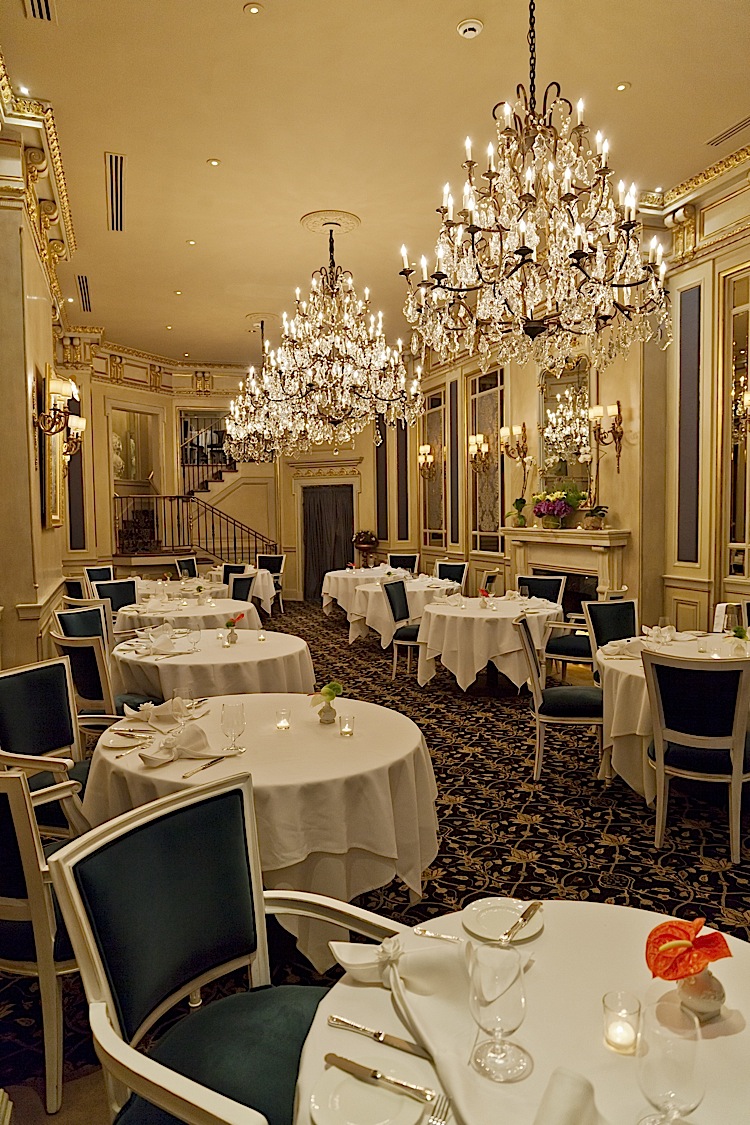 It may
seem a statement of the obvious to point out that Le
Bec Fin is now crafting one of the best foie gras
dishes in Philadelphia. After all, it’s the sort of
thing that a great French restaurant is supposed to
do: take a famously luxurious ingredient and
transform it into something even more decadent than
its inherent nature already accomplishes.
It may
seem a statement of the obvious to point out that Le
Bec Fin is now crafting one of the best foie gras
dishes in Philadelphia. After all, it’s the sort of
thing that a great French restaurant is supposed to
do: take a famously luxurious ingredient and
transform it into something even more decadent than
its inherent nature already accomplishes.
But this particular Hudson Valley foie gras,
with its textbook-perfect crust encasing a center of
almost liquid succulence, did more than deliver on a
literal level. It also symbolically heralded a new
era not just of Le Bec Fin but also of how haute cuisine
now manifests itself in Philadelphia. With the
balancing sweetness of huckleberry puree painted
onto the plate and the headiness of aged balsamic to
cut it and bring the perfume of fennel into the
fold, all of it anointed with Armando Mani
vintage-dated olive oil, this was foie gras brought
into a realm of lightness and delicate complexity
I’ve rarely seen before.
French gastronomy as manifested at the new Le
Bec Fin is rooted in a deep respect for the glories
of its tradition, yet never finds itself mired in
them. It’s fine dining with a lighter touch than
you’d expect. And it is thoroughly successful.
For more than four decades, Le
Bec Fin, under the ownership of the exacting
Georges Perrier, was a benchmark for haute cuisine
in America, introducing countless restaurant-goers
not just to classic preparations and, eventually, as
the years wore on, a sense of dishes more creative
than Le Bec often got credit for, but also to a more
civilized, formalized way of dining, with its teams
of servers choreographed like dancers at the
Bolshoi. In the years leading up to his departure,
Perrier’s influence had waned a bit as other
restaurants competed for the same high-end-dining
dollars, and he attempted to steer Le Bec Fin away
from its more formal roots. But even today, there is
no denying the impact he had--and, in a number of
important ways, continues to have.
The new Le Bec Fin is
certainly a different restaurant, and owner
Nicolas Fanucci
is succeeding brilliantly in making it
his own. But aspects of the original remain: The
dining room, if less weighty than it was, still has
a transporting shimmer to it: You know, immediately,
that this will be a special afternoon or evening
here. The service is impeccable, yet far more
approachable than you might imagine. And the old Le
Bar Lyonnais downstairs, briefly been
transformed into Tryst before Fanucci took over, is
now the urbane Chez Georges, a lounge and bistro
that’s a fitting tribute to the man who started it
all.
Mingling richness with an almost impossibly light touch is one of the great achievements of the kitchen here under the watch of Chef Walter Abrams (right), formerly Sous Chef at the French Laundry in Yountville, CA. Savory-sweet chestnut emulsion and ethereal sweetbreads worked in the service of a celery root agnolotti whose skin was breathtakingly delicate. A compact brick of beef, dry aged for 32 days and ringing with an almost Gorgonzola-like sweet-funkiness, sat regally alongside potato confit and a cylinder of Savoy cabbage studded with applewood-smoked bacon. Poularde featured three distinct layers, each more appealing than the last, each matched impeccably with the accompanying artichoke fondue: The caramel-toned skin, a millimeter-thin ring of fat that had just begun melting, and fantastically moist meat showing the deepest shade of pink.
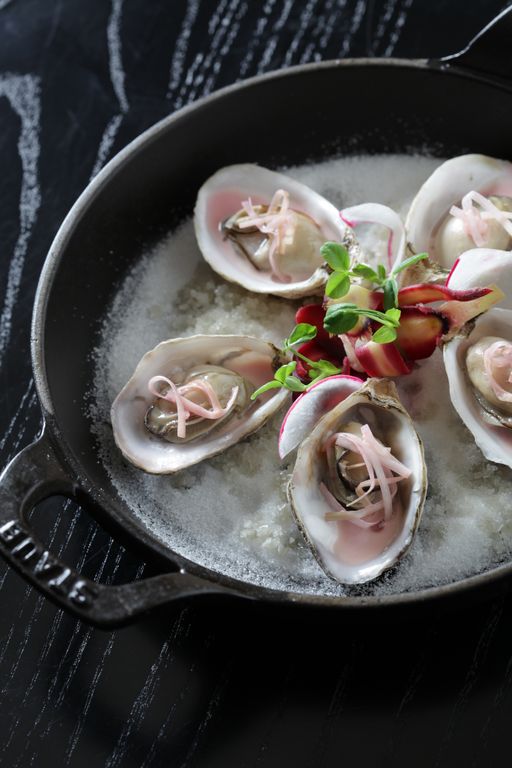 The
same
philosophy of layered, well-developed flavors and a
lighter touch underpins the menu du jardin,
or vegetarian menu. In the sunchoke royale, the
humble root was transformed into a kind of custard
with a meatiness and depth that some actual cuts of
beef never quite reach. Navel orange segments and
sprigs of mint provided brightness and lift when
least expected. Foraged mushrooms with Malabar
spinach and beets, crowned with a perfectly poached
egg, which is broken for a sauce, could easily go
toe-to-toe with any meat-based counterpart.
The
same
philosophy of layered, well-developed flavors and a
lighter touch underpins the menu du jardin,
or vegetarian menu. In the sunchoke royale, the
humble root was transformed into a kind of custard
with a meatiness and depth that some actual cuts of
beef never quite reach. Navel orange segments and
sprigs of mint provided brightness and lift when
least expected. Foraged mushrooms with Malabar
spinach and beets, crowned with a perfectly poached
egg, which is broken for a sauce, could easily go
toe-to-toe with any meat-based counterpart.It’s not all French classics here, and the riffs on non-traditionally-French dishes are just as successful. Nettle-ricotta pierogi was flavorful enough to make the most judgmental Eastern European grandmother proud, and, like the agnolotti, it was encased in a pasta that nearly melted when it hit the tongue. Portuguese sardines, their skin glistening like some kind of opal against the shimmering light of the dining room, arrived draped over a fluffy eggplant, olive, and swordfish mousse. The entirety of the plating, including marinated tomatoes and watercress, channeled the Mediterranean as succinctly and joyously as any dish I’ve had recently. Musque de Provence velouté--think of it as a kind of pumpkin soup; at first taste it seemed overwhelmed by its curry but eventually settled into a sense of exoticism and balance that made subsequent spoonfuls impossible to resist.
Not everything was perfect, of course, though any shortcomings were more a result of too delicate a hand rather than any real underlying problems. Flawlessly tender pork belly would have had greater impact with a more deeply rendered crust. This is an ingredient that does best on the lustier end of the spectrum. Autumn squash salad was a lovely gathering of impeccably delicate squash, crisp Asian pears, kale, and pumpkin seed butter, but no matter how many different combinations of components I tried, it never rose above the level of very good--difficult when your companions are tucking into the glorious foie gras course.
But those were mere hiccups in meal that was, from the amuses to the mignardises, truly excellent.
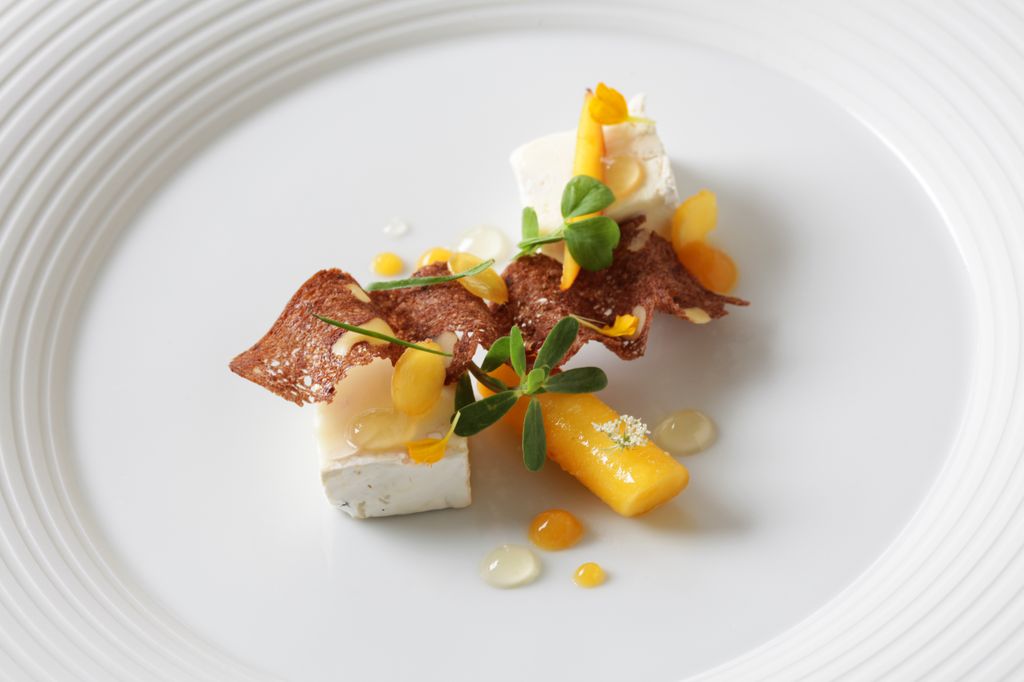
Now under Fanucci, former G-M of The French Laundry and of Perrier's Le Bec Fin, this is a new restaurant, its name notwithstanding. The cheese cart, for example, is no longer rolling around the dining room. Neither is the dessert trolly. Happily, neither of these changes has diminished the restaurant in any way: The plating and quality of the individual cheeses, for example, is gorgeous, including an herb-perfumed Fleur de Maquis with candied pecans and quince relish, and a Langres Chalancey (like Epoisses but less aggressive) with Concord grape, black walnuts, and a joyous banana-like paw paw bread that stuck to the teeth with each bite.
Desserts embodied entire operas of flavor, and Pastry Chef Jennifer Smith (below) is clearly a serious talent; Philadelphia’s collective sweet tooth is sure to grow more intense once word of her work gets out further. Creations like a Seckel pear bavarois with local lait cru from Lancaster, PA, and gianduja assumed the flavors of the autumn with laser-like precision. Spiced pumpkin cheesecake singlehandedly made me no longer miss summer fruit season: who needs a peach when you can
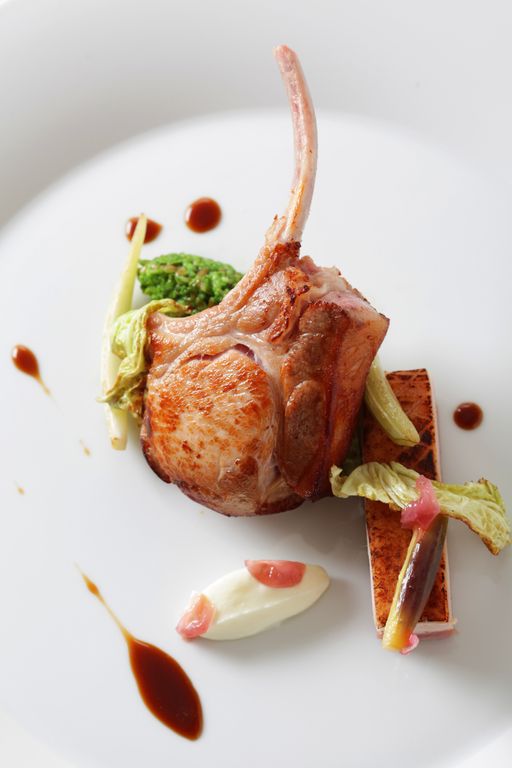 have a gourd like this one? A
procession of banana génoise, salted caramel
mousse, vanilla ice cream and hazelnuts marched
across another plate like impeccably dressed
soldiers on parade-display for the general.
have a gourd like this one? A
procession of banana génoise, salted caramel
mousse, vanilla ice cream and hazelnuts marched
across another plate like impeccably dressed
soldiers on parade-display for the general.As for the wine list, first-time guests will be pleasantly surprised
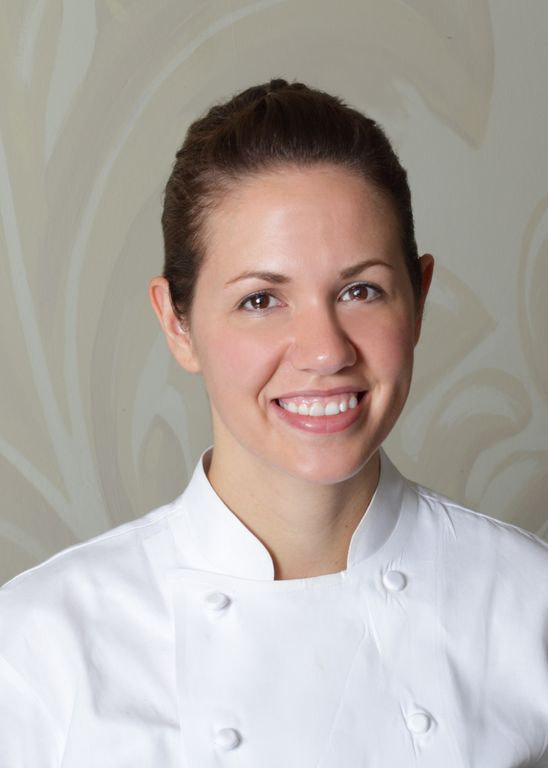 by the range of options. While you
can certainly tuck into a mortgage-payment bottle of
Burgundy or Bordeaux, or, say, a miraculous 2001
Château d’Yquem--one of the single greatest
wines you’re ever likely to taste--there are also
plenty of gems at far lower prices as well. At my
table, for example, we loved a Georges Lignier
Gevrey-Chambertin 1997, which, at $95, embodied all
the high-toned acidity, red cherries and mushroom-y
funk of Pinot Noir from Burgundy that usually sets
you back far more money than that.
by the range of options. While you
can certainly tuck into a mortgage-payment bottle of
Burgundy or Bordeaux, or, say, a miraculous 2001
Château d’Yquem--one of the single greatest
wines you’re ever likely to taste--there are also
plenty of gems at far lower prices as well. At my
table, for example, we loved a Georges Lignier
Gevrey-Chambertin 1997, which, at $95, embodied all
the high-toned acidity, red cherries and mushroom-y
funk of Pinot Noir from Burgundy that usually sets
you back far more money than that.And speaking of money, Fanucci just recently announced the arrival of a new pricing structure for dining here: The 8-course, $150 dinner menus will remain, but now they are joined by a 4-course, $85 option as well. Lunch, which until now had been limited to a 4-course, $55 experience, now also includes a 3-course, $39 choice. Combine that with personalized iPad menus and user-friendly wine lists and a staff as elegant, confident, and beautifully choreographed as any in the city, and you have a restaurant poised for great things.
In the end, the new Le Bec Fin is a deeply personal restaurant, with heart and a sense of soul that only promise to grow. Nicolas Fannucci works the room with warmth and charm to spare. His love of the restaurant and what it means to the city in particular and fine French dining in America in general is ringingly clear.
When Chef Perrier announced his retirement, and before it was clear that Fannucci and his team would be taking over the grand old restaurant and re-working it in a new image, fine-dining lovers in Philadelphia were justifiably concerned. But with this new incarnation of Le Bec Fin, and under the expert guidance of Fannucci, Chef Abrams, and the rest of their team, the jewel of Walnut Street represents not just a new era for the restaurant itself, but also for Philadelphia dining as a whole.
It’s good to have Le Bec Fin back, and it’s great to see it through this new lens.
Le Bec Fin is open for lunch Mon.-Fri., for dinner
Mon.-Sat.
❖❖❖
NEW YORK CORNER
by
John Mariani
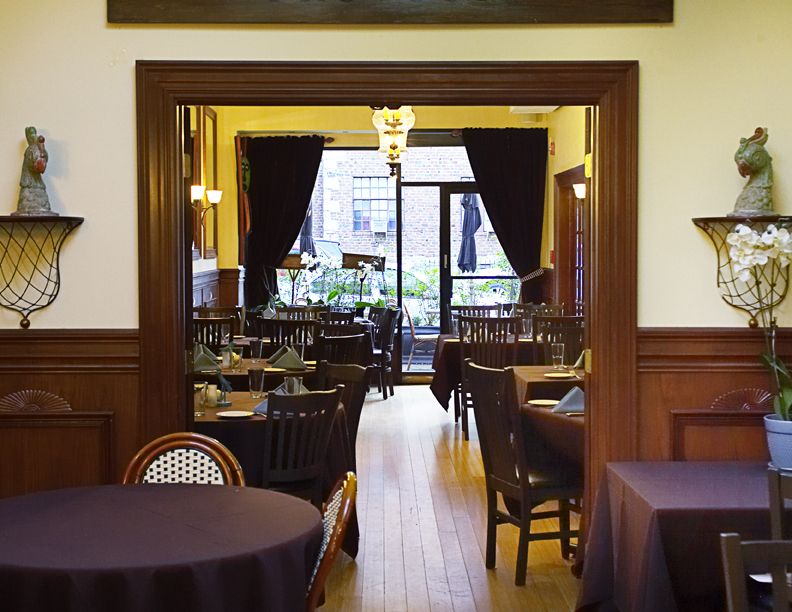 BISTRO
ROLLIN
BISTRO
ROLLIN
142 Fifth Avenue
Pelham, NY
914-633-0780
bistrorollin.com
Everett
Potter, whose travel
newsletter is linked here each week, and his
wife Gayle occasionally dine with my wife and me, and
recently we returned to a restaurant not far from us,
in Pelham, NY, that reminded me again that Westchester
County grows annually in the number of solid dining
experiences that make this NYC suburb a highly
desirable place to live and eat.
Bistro Rollin is a warm and
warm-hearted American bistro that began in 2009 as a
French bistro, much praised at the time for the
authenticity of its cuisine
bourgeois.
Owners Arthur and Barbara Bratone speak of a time
“more than forty years ago when we were on a tour of
three-star Michelin restaurants in France. Hopelessly
lost one day trying to find Paul Bocuse’s restaurant,
outside of Lyon, we arrived hours late for our
reservation and were almost afraid to enter. But when
the Maitre D’ came to the door
apologizing that the restaurant was located in such a
ridiculously difficult to find spot, we knew we had
found a truly unique place. This is what we strive for
at Bistro Rollin.”
Bistro Rollin is not in the culinary league of Bocuse,
but in its familial hospitality, it works at a similar
level. One or both of the Bratones will be there to
welcome you, and you’ll likely get a chance to meet
Chef Manny Lozano, Westchester-born, with long
experience in noted NYC restaurants like March,
Aureole, and L'Absinthe.
As you enter there is
the “R” Bar where you can eat and drink lightly, with
items like the tuna burger or tuna carpaccio, or enjoy
the whole dining room menu. As noted, Bistro Rollin
originally aimed for a concentrated French bistro
style, but over the years at the behest of its
clientele, more Italian and American dishes have been
added.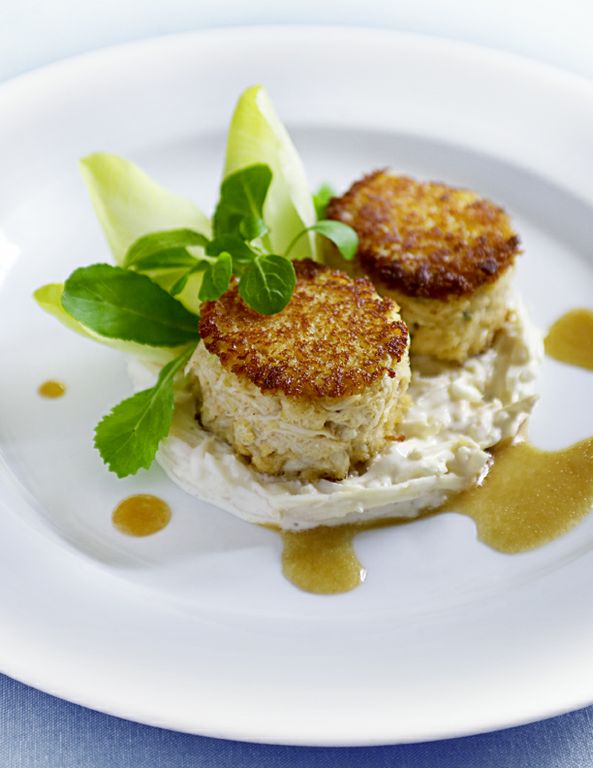 Still, they
all share a hearty style, now best exemplified in the
autumn-winter menu.
Still, they
all share a hearty style, now best exemplified in the
autumn-winter menu.
Thus, the lasagna here
is done with a wild boar ragù and
béchamel. Thank heavens they’ve returned their
classics onion soup, bubbling with Emmental and
Gruyère Cheeses,
and I really liked Lozano’s crab cakes
with celeriac slaw. Pan-roasted skate comes with acorn
squash, wild mushrooms and a dark red wine sauce. Fat sea
scallops take on a richness from a broccoli puree,
pine nuts and beurre
blanc laced with ginger soy.
Roast duck breast has a delicious side of creamy endive, roasted apples, prunes, and
chestnuts, which is exactly the kind of dish that
shows off Lozano’s treatment of seasonal ingredients.
He also does a commendable half-pound burger with
handcut French fries, silky-sweet onion confit, saline
pancetta
bacon, and melted Gruyère, which, at $16 is one
of the great bargains around.
There is a plate of three artisanal cheeses available,
or you can go with good renditions of crème
brûlée, apple tart, housemade ice creams
and sorbets, or my favorite, profiteroles with vanilla
ice cream, chocolate sauce and candied almonds.
So I consider myself fortunate to live just four miles from Bistro Rollin. If you're in my neck of the woods, drop by and be delighted by this unexpected little gem.
Lunch and dinner Tues.-Sat.; brunch & dinner on
Sunday; Dinner appetizers
$9-$19, entrees $16-$31.
❖❖❖
NOTES FROM THE WINE CELLAR
Clos des Mouches Sets a Gold Standard for Chardonnay
by John Mariani
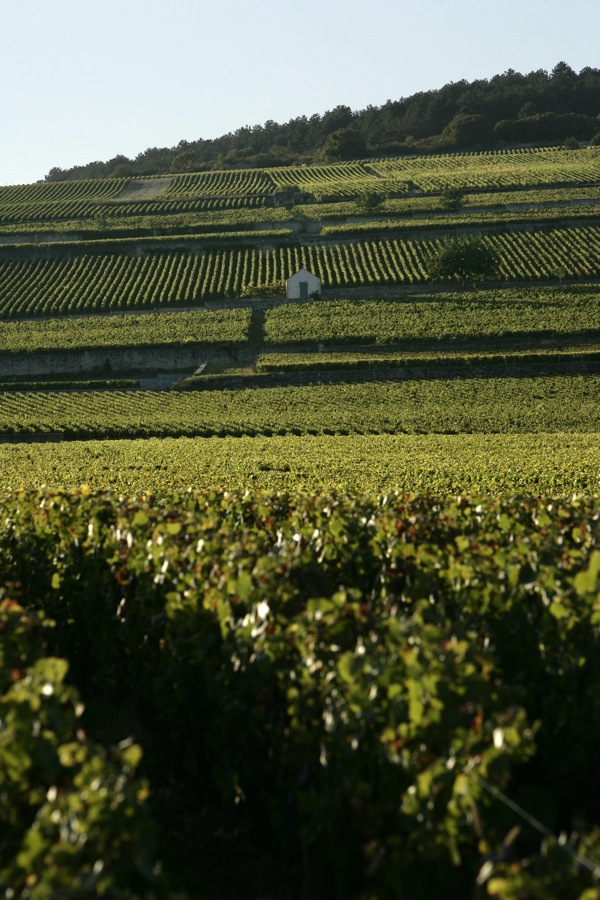 Calling
a white Burgundy like Clos de Mouches a first-rate
chardonnay is like saying a Maserati is a fine
piston-engine car. Indeed, it says nothing. Chardonnay
is, with cabernet sauvignon, the most widely recognized
grape varietal in the world (with more than 400,000
acres planted, with the largest acreage in California),
but it is actually a grape whose basic flavor is pretty
dull.
Calling
a white Burgundy like Clos de Mouches a first-rate
chardonnay is like saying a Maserati is a fine
piston-engine car. Indeed, it says nothing. Chardonnay
is, with cabernet sauvignon, the most widely recognized
grape varietal in the world (with more than 400,000
acres planted, with the largest acreage in California),
but it is actually a grape whose basic flavor is pretty
dull.Primarily it is the soil of a region that gives chardonnay its distinctive flavor. Add to that different styles of vinification and enormous variance in the amount of time the wine sleeps in an oak barrel (the actual origin of the oak, age and size of the barrel matters, too), and you find that a chardonnay from New Zealand tastes little like a chardonnay from South Africa or Moldavia.
Winemakers can easily obtain a high yield from the varietal, and the wine can develop a fairly high degree of alcohol for a white wine. And therein lies the problem with modern chardonnay: far too many examples are mass produced, overripe, high in alcohol, and taste like caramelized wood, absorbed from
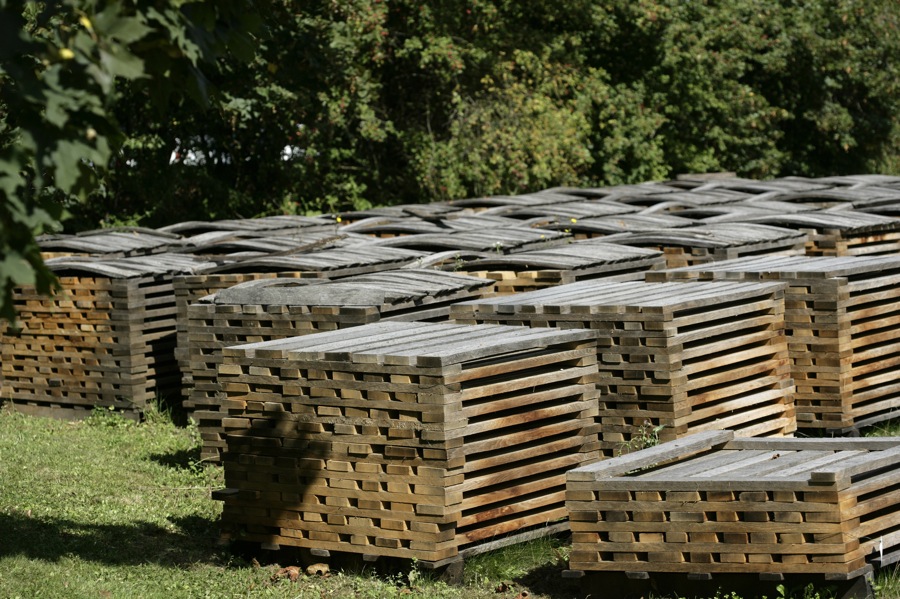 barrels whose staves (below) that have
been “toasted” with fire.
barrels whose staves (below) that have
been “toasted” with fire.While ever mindful of new technology, Burgundian wine producers also trust hundreds of years of experience in determining which vineyards and what moment in autumn will yield the best grapes and, after further assessment, just how much time their wines should spend in barrel.
I shall never forget the great lesson I learned long ago walking with a Burgundian winemaker up a section of what is called Cote d’Or (golden slope, above), tasting grapes as we ascended. At the edge of the slope—it’s barely a hillside—the grapes were tangy and acidic, but as we walked mere yards upwards, where the angle of the sun provided more heat and light, the grapes grew sweeter. The grapes higher up would provide more fruitiness, more sugar, more body, and higher alcohol.
Back at the winery I tasted the wine from three or four barrels of the illustrious white Burgundy called Corton-Charlemagne. All the wines were from the same vineyard and harvest, yet each barrel’s wine tasted different—all distinctly Burgundian in flavor but different enough so that blending later on would be necessary to achieve a balance. Even then, with bottle aging, the wine might taste different bottle to bottle. Getting a producer’s style consistent is the job of the winemaker, who in Burgundy is often overseen by the negociants (merchants) who may or may not own
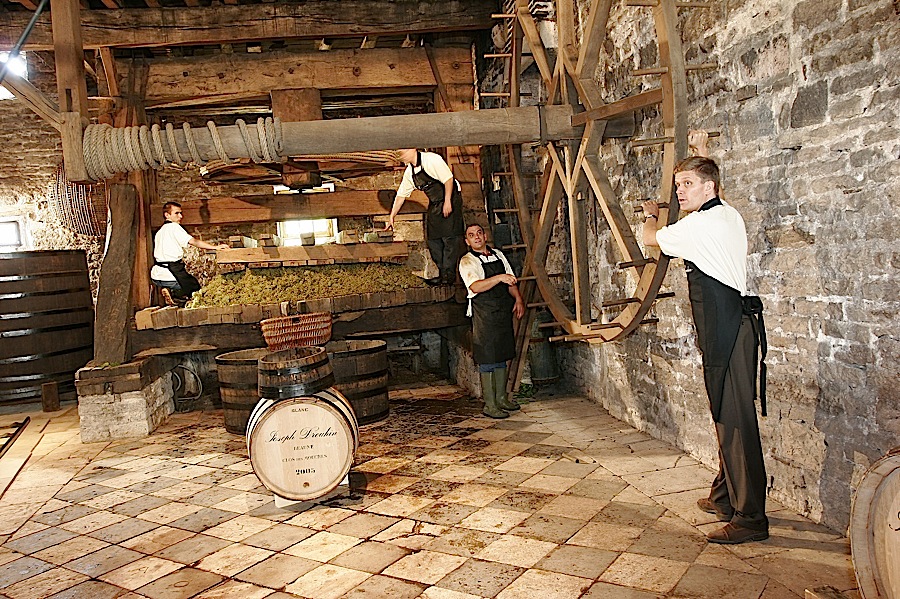 parts of the same vineyard.
parts of the same vineyard.For this reason, then, Burgundy lovers either search endlessly for wines that please their palates most, or, what is much easier, come to depend on certain producers with longstanding reputations for consistent excellence. Names like Bouchard Père & Fils, Louis Jadot, Domaine Leroy, and Joseph Drouhin (left) are also readily available in the global market and produce a wide range of good wines, from the most illustrious and expensive.
A tasting of a bottle of Drouhin’s Clos de Mouches 2010 ($120) with steamed lobster and drawn butter reminded me all over again of that stroll up the Côte d’Or. Here was chardonnay at its highest expression in a wine that exemplifies the Burgundy winemaking tradition at its finest.
The summer weather for the 2010 vintage was rainy and cool, resulting in small grape berries and a reduced crop, but the berries ripened fully in September, concentrating the sugars and juices. According to Fredéric Drouhin, CEO of the company founded in 1880, “Because the vintage has less alcohol than the 2009, the wines are more refined, offer great purity and freshness.”
This coalescence of factors has made for a white Burgundy whose fruit is impeccably balanced with just enough acid to keep it bright and with only a rounded hint of oak in the finish. Burgundy fans might argue that a few more years in the bottle will only improve wines of this caliber, but drinking it that night gave me such supreme joy in rediscovering the true personality and essence of the chardonnay grape in Burgundy, that I plan to drink Drouhin’s Chassagne-Montrachet Morgeot ($114) and Puligny-Montrachet
 Folatiéres
($102) within the next few months.
Folatiéres
($102) within the next few months.Chardonnays in the rest of the world may try to imitate the grand Burgundy style, though terroir and that sunlight on the slopes are key to its uniqueness. If the best white Burgundies—and there are a lot of insipid ones—are the gold standard and are priced accordingly, I think it better for the rest of the world to make chardonnay in their own styles and try to make it better and better. As I said, a Maserati is a great deal more than a piston-engine car, and a great white Burgundy transcends chardonnay’s proliferation elsewhere.
John Mariani's wine column
appears in Bloomberg
Muse News, from which this story was adapted.
Bloomberg News covers Culture from art, books, and
theater to wine, travel, and food on a daily basis.
❖❖❖
THIS WON'T HURT A BIT
A student
nurse named Rejane Moreira Telles in training at a Rio
de Janeiro clinic. accidentally injected an elderly
woman with milky coffee. Telles told a local TV show,
"Anyone can get confused. I injected the coffee, and I
put it in the wrong place." After entering the patient's
heart and lungs, the woman drowned within hours.

FOOD WRITING 101:
AND THEN THERE ARE THE REST OF THE DWARF ADJECTIVES—SMELLY, FATTY,
TASTY, AND SALTY
"Try the one-two punch of country pâté,
both creamy and nubbly, followed by a properly chewy and
minerally hanger steak that is nearly outshone by a
blissfully rich garnish of stewed oxtail and nutty
celeriac."—Amy Pataki, Toronto Star (111/10/12)
Any of John
Mariani's books below may be ordered from amazon.com.
 |
My latest book, which just won the prize for best book from International Gourmand, written with Jim Heimann and Steven Heller, Menu Design in America, 1850-1985 (Taschen Books), has just appeared, with nearly 1,000 beautiful, historic, hilarious, sometimes shocking menus dating back to before the Civil War and going through the Gilded Age, the Jazz Age, the Depression, the nightclub era of the 1930s and 1940s, the Space Age era, and the age when menus were a form of advertising in innovative explosions of color and modern design. The book is a chronicle of changing tastes and mores and says as much about America as about its food and drink.
“Luxuriating vicariously in the pleasures of this book. . . you can’t help but become hungry. . .for the food of course, but also for something more: the bygone days of our country’s splendidly rich and complex past. Epicureans of both good food and artful design will do well to make it their coffee table’s main course.”—Chip Kidd, Wall Street Journal.
“[The menus] reflect the amazing craftsmanship that many restaurants applied to their bills of fare, and suggest that today’s restaurateurs could learn a lot from their predecessors.”—Rebecca Marx, The Village Voice. |
"Eating Italian will
never be the same after reading
John Mariani's entertaining and
savory gastronomical history of
the cuisine of Italy and how it
won over appetites worldwide. . .
. This book is such a tasteful
narrative that it will literally
make you hungry for Italian food
and arouse your appetite for
gastronomical history."--Don
Oldenburg, USA Today. "Italian
restaurants--some good, some glitzy--far
outnumber their French rivals. Many of
these establishments are zestfully described
in How Italian Food Conquered the World, an
entertaining and fact-filled chronicle by
food-and-wine correspondent John F.
Mariani."--Aram Bakshian Jr., Wall Street
Journal.
"Equal parts history,
sociology, gastronomy, and just plain fun,
How Italian Food Conquered the World tells
the captivating and delicious story of the
(let's face it) everybody's favorite
cuisine with clarity, verve and more than
one surprise."--Colman Andrews, editorial
director of The Daily Meal.com. "A
fantastic and fascinating read, covering
everything from the influence of Venice's
spice trade to the impact of Italian
immigrants in America and the evolution of
alta cucina. This book will serve as a
terrific resource to anyone interested in
the real story of Italian food."--Mary Ann
Esposito, host of PBS-TV's Ciao Italia. "John
Mariani has written the definitive history of
how Italians won their way into our hearts,
minds, and stomachs. It's a story of
pleasure over pomp and taste over
technique."--Danny Meyer, owner of NYC
restaurants Union Square Cafe, Gotham Bar
& Grill, The Modern, and Maialino.
|
 |
 |
 |
 |
 |
 |
 |
 |
 Everett Potter's Travel Report:
Everett Potter's Travel Report: 
 Eating Las Vegas
is the new on-line site for Virtual Gourmet
contributor John A. Curtas., who since 1995
has been commenting on the Las Vegas food
scene and reviewing restaurants for Nevada
Public Radio. He is also the
restaurant critic for KLAS TV, Channel 8 in
Las Vegas, and his past reviews can be
accessed at KNPR.org.
Click on the logo below to go directly to
his site.
Eating Las Vegas
is the new on-line site for Virtual Gourmet
contributor John A. Curtas., who since 1995
has been commenting on the Las Vegas food
scene and reviewing restaurants for Nevada
Public Radio. He is also the
restaurant critic for KLAS TV, Channel 8 in
Las Vegas, and his past reviews can be
accessed at KNPR.org.
Click on the logo below to go directly to
his site.

Tennis Resorts Online: A Critical Guide to the World's Best Tennis Resorts and Tennis Camps, published by ROGER COX, who has spent more than two decades writing about tennis travel, including a 17-year stretch for Tennis magazine. He has also written for Arthur Frommer's Budget Travel, New York Magazine, Travel & Leisure, Esquire, Money, USTA Magazine, Men's Journal, and The Robb Report. He has authored two books-The World's Best Tennis Vacations (Stephen Greene Press/Viking Penguin, 1990) and The Best Places to Stay in the Rockies (Houghton Mifflin, 1992 & 1994), and the Melbourne (Australia) chapter to the Wall Street Journal Business Guide to Cities of the Pacific Rim (Fodor's Travel Guides, 1991).


MARIANI'S VIRTUAL GOURMET
NEWSLETTER is published weekly. Editor/Publisher: John
Mariani.
Contributing Writers: Christopher Mariani, Robert Mariani,
John A. Curtas, Edward Brivio, Mort Hochstein,
Suzanne Wright, and Brian Freedman. Contributing
Photographers: Galina Stepanoff-Dargery,
Bobby Pirillo. Technical Advisor: Gerry McLoughlin.
© copyright John Mariani 2012
